Daman and Diu, former union territory of India, which comprised two widely separated districts on the country’s western coast. Daman is an enclave on the state of Gujarat’s southern coast, situated 100 miles (160 km) north of Mumbai (Bombay). Diu encompasses an island off the southern coast of Gujarat’s Kathiawar Peninsula, 40 miles (64 km) southeast of Veraval, as well as a small area on the mainland. The town of Daman, in the Daman district, was the capital of the territory. In January 2020 the two districts joined Dadra and Nagar Haveli to become Dadra and Nagar Haveli and Daman and Diu union territory. Area 43 square miles (112 square km). Pop. (2011) 242,911.
The name Daman is probably derived from the Daman Ganga River, while Diu is from the Sanskrit word dvipa, meaning “island.” From Mauryan times (4th–2nd century BCE), both were subject to various local and regional powers ruling in western India. In the 13th century Daman formed part of the Ramnagar state, which then became a tributary of the Gujarat sultans. Similarly, numerous dynasties in Kathiawar (Saurashtra) ruled Diu until it fell to the sultan of Gujarat in the early 15th century.
The Portuguese acquired Daman and Diu as part of their grand design to control the trade of the Indian Ocean. In 1535, under a treaty with Sultan Bahādur Shah of Gujarat, the Portuguese built a fort at Diu, an important port on the flourishing commercial and pilgrimage routes between India and the Middle East. By the mid-1550s all Gujarati ships entering and leaving the Gulf of Khambhat (Cambay) ports were required to call at Diu to pay Portuguese duties. In Diu the Portuguese constructed a Jesuit college, which was converted into the majestic Cathedral of Sé Matriz about the turn of the 17th century; the cathedral remains a landmark today.
The people of Daman and Diu are predominantly Hindu, with small Muslim and Christian minorities. Gujarati is the main language in both districts. Less than one-tenth of the territory’s population consists of Scheduled Tribes (indigenous minority peoples who are not embraced by India’s caste hierarchy). Of these communities the Dubla, Dhodia, and Varli are the largest groups.
Agriculture and fishing dominate the economies of Daman and Diu. Rice, ragi (also called finger millet), pulses (legumes), and beans are among the main crops of Daman. In Diu, crops such as bajra (pearl millet) and wheat flourish in the arid climate; a smaller portion of land is cultivated in Diu than in Daman, however. Much of the industrial growth of the territory has been promoted through the efforts of the government of the neighbouring state of Goa. The largest towns of the territory—Diu and Daman—are commercial centres.
| Administrator | Area | People | Languages Official |
|---|---|---|---|
| Praful Khoda Patel | 112 km2 | 242,911 | Konkani, Gujarati |
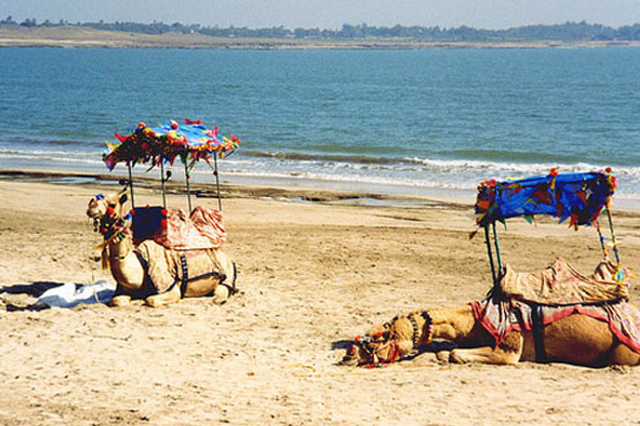
Being situated on the edge of the Junagadh District, this small town of Diu has been entertaining tourists for a long time now. The shoe-shaped Nagoa beach lets you get comfortable in its aura and a swim in this water will make you get closer to nature. Surrounded by palm trees that sway in the cool breeze surely makes your trip to the beach more relaxing.
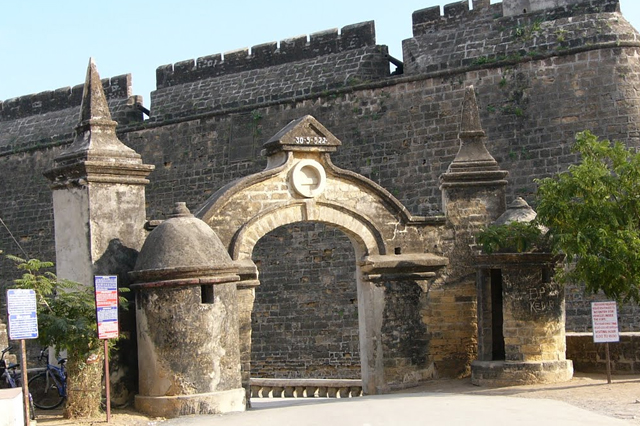
A remnant of Portuguese rule, Diu Fort is an architectural marvel that has held strong. The fort was constructed between 1535 and 1541 on the ruins of the Mughal fort that was built by an Arab governor Malekhyaa
The fort served as a strategic vantage point for the Portuguese since it is surrounded by the Arabian sea on all three sides and by a canal one the last, making it almost impregnable. You can see leftover canons at the fort, from a time when they were functional. The fort now houses the Diu jail and lighthouse.
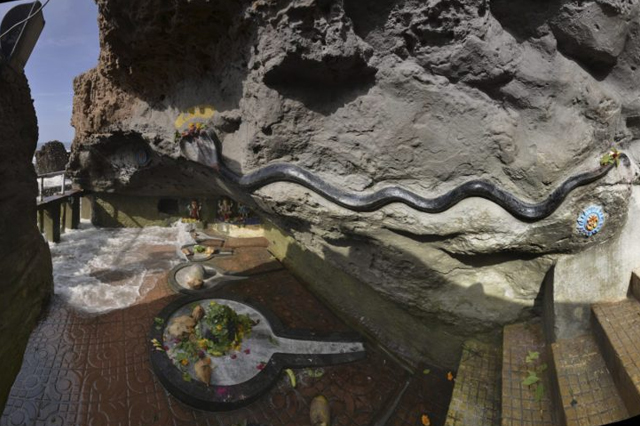
The Gangeshwar Temple is situated in the Fudam village approximately 30 minutes from the town of Diu. The temple is dedicated to Lord Shiva. Legends have it that the five Shiva Lingas located here had been erected her by none other than the Pandavas during their exile from Hastinapur.
Due to the rich history associated with the temple, it sees a massive influx of devotees every year. The Shiva Lingas are situated by the banks of a sea that are continuously washed by the incoming waves.
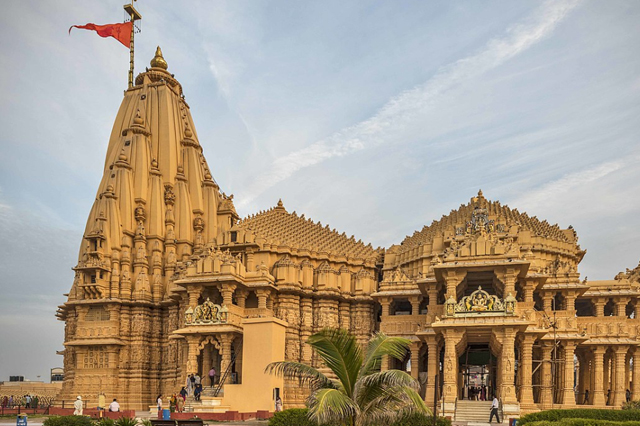
The Somnath Temple is a famous shrine amongst various Hindu pilgrims. The shrine is located in the Dabhel village which is an hour’s drive away from Diu. The shrine is dedicated to Lord Shiva.
The shrine is said to have come into existence when a monk in the 19th century requested a shivling to be formed in Dabhel. The shrine commemorates the erection of the Shivling every year by hosting the ‘Gangaji Fair’ that attracts pilgrims from all over.
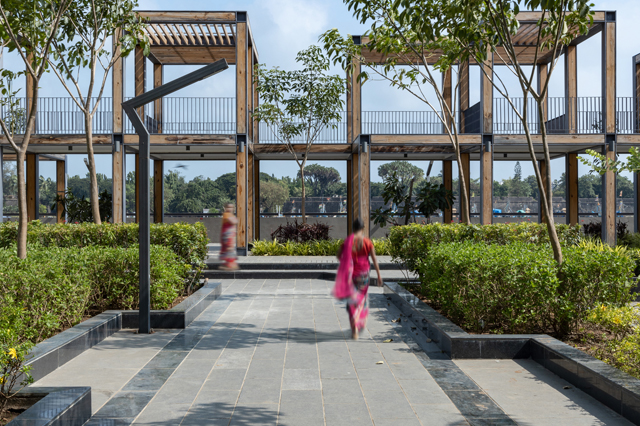
The Jetty Garden in Moti Daman is a popular tourist spot. The garden lies on the banks of the Daman Ganga river. What makes this garden unique is the plethora of amenities provided in the garden like rides, lawns large picnic space and seating arrangements that directly overlook the adjacent river.
The garden also has an attractive spot that catches the eye of every tourist. The garden is very close to the taxi stand in Nani Daman and is also accessible by the nearby boat jetty with boats leaving every 30 minutes.

The Naida Caves are situated just by the main Wall of the Diu Fort. It is believed that the Portuguese, during their construction of the Diu Fort would source material from these caves. The caves themselves are a marvel of nature.
They consist of a massive network of tunnels that interconnect with each other and set up a sort of maze. The beauty of the caves and the sunshine that seems through the roof of the tunnels will leave every onlooker mesmerized with its beauty.

Ghogla Beach is located in the village of Ghogla that is around two hours away from the town of Diu. The beach is a popular vacation spot for many tourists. The beach boasts various amenities including food and accommodation.
The beaches are considered to be one of the most beautiful beaches in Diu and also houses a tourist complex. Activities like parasailing and jet skiing are conducted at the beach for a nominal fee.

Since Daman is the city of Christians, it is filled with various beautiful churches and cathedrals. But one of the cathedrals presents an exquisite piece of artwork. Built in 1603, the Cathedral of Bom Jesus has been a must-visit for the locals. The architecture of this cathedral is quite admirable. The carvings on the gateways flaunt the skills of various brilliant artisans. Despite being made long before, the altars and interiors eulogize the excellence of the men who worked on the same. The southern entrance of this cathedral adorns with six statues of revered saints which display the artistic view of the engineers who designed them. It gets flooded with tourists and followers of Christianity during the festive season. This place is a visual treat for anybody, so make sure to pay a visit and I am sure that you won’t regret it.
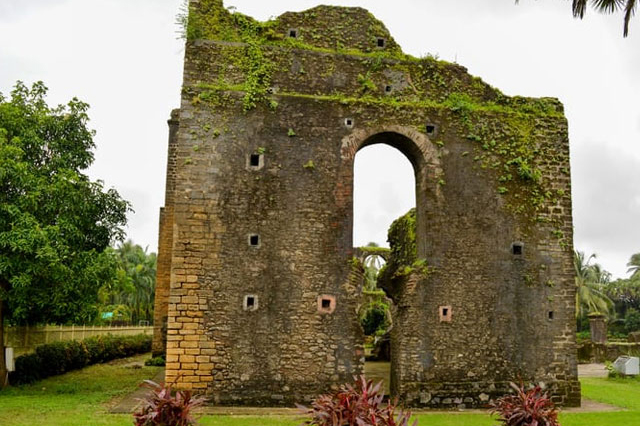
Once home to various Christian scholars from all over the world, the Dominican Monastery is now being forgotten. People with keen interest in history still visit this place in order to absorb the essence of this place. With a view of Daman Ganga River, you’ll have a feeling of quietude in the magnificent ruins. On the third Sunday of every December, in honour of St. Dominic, a public mass is held. On 2nd February, people gather to recite an ancient prayer. Though this place can’t offer you a lot but the period of the existence of this place might make your trip interesting.
| # | Code | Station Name | Place |
|---|---|---|---|
| No Data Found... |